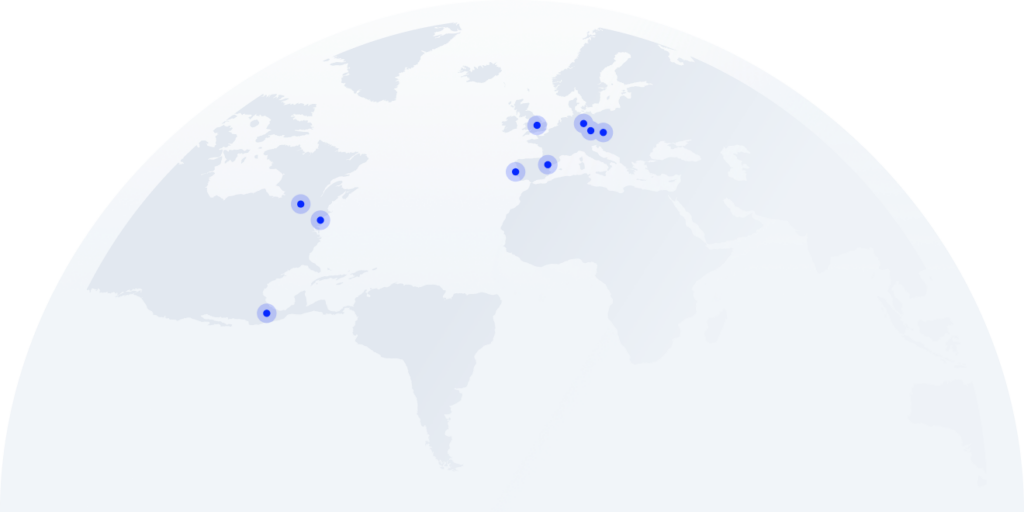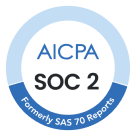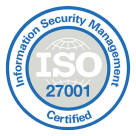
Think manual dialing is just part of the sales grind? Think again.
In high-performance sales environments, successful teams have moved beyond one-call-at-a-time approaches to maximize every minute of prospecting time through intelligent automation.
And you’re still leaving money on the table with endless rings, wasting your reps’ potential when they spend only 28% of their time actually selling¹?
That’s where a parallel dialer comes to the rescue. It dials multiple leads, deploys advanced AI optimization, and unlocks productivity gains tailored specifically to modern sales teams’ needs. Just like yours.
This guide shares the specific framework for increasing your team’s talk time while improving prospect relationship quality.
Ready to transform your outbound operations? Let’s get started.
Key takeaways
- Parallel dialers increase sales productivity, transforming hours of manual dialing into minutes of focused outreach
- The technology initiates multiple simultaneous calls per agent, connecting only answered calls while automatically ending others
- Modern systems integrate with CRM platforms and use AI optimization to improve connection rates
- Implementation requires careful planning around compliance, team training, and gradual scaling to maximize effectiveness
- Best parallel dialer software solutions offer cloud-based deployment, eliminating infrastructure costs while enabling remote team operations
Don’t let your team spend another day listening to rings and voicemails. See parallel dialing in action.
What is a Parallel Dialer?
A parallel dialer is an automated system that dials multiple phone numbers simultaneously for each sales agent, connecting them only when a live person answers. It can initiate several calls at once per agent, unlike traditional one-at-a-time dialing.
When a call is answered, the system uses voice detection technology to identify live answers versus voicemails, busy signals, or disconnected lines, then instantly routes live connections to available agents while automatically handling unanswered calls.
Parallel dialers reduce agent inactive time and ensure higher call throughput, enabling more live conversations and increased productivity.
The technology combines intelligent algorithms with real-time call management. The system may integrate machine learning to refine dialing patterns based on historical data, improving efficiency over time while maintaining a balance between maximizing call volume and ensuring smooth agent workflow.
When no agents are available, the algorithm temporarily slows the dialing rate to prevent dropped calls and maintain compliance with regulations.
Why Parallel Dialer is a Must-Have for Sales Teams
Sales teams across industries face the same challenge: agents spend most of their time on non-conversation activities instead of actually selling.
The typical outbound operation sees agents dedicating significant parts of their day to manual dialing, listening to rings, navigating voicemail systems, and logging call outcomes.
This creates an efficiency problem that directly impacts ROI. Nearly two-thirds (64.8%) of reps’ time, on average, is spent in non-revenue-generating activities, leaving less time for functions related to selling². Field reps are somewhat ahead, spending 3.1% more time selling than their inside sales counterparts.
When sales professionals spend the majority of their expensive time on mechanical tasks rather than engaging prospects, the economics don’t work.
Parallel dialers solve this by automating the mechanical work while maximizing agent conversation time. Here’s why it’s a must-have for your sales team:
1. Boost Efficiency with Smart Call Management
Modern parallel dialer systems use machine learning to refine dialing patterns based on historical data. The technology analyzes call outcomes, timing patterns, and connection rates to continuously optimize performance over time.
The system automatically adjusts dialing ratios throughout the day, maintaining consistent agent workflow while maximizing live connection opportunities. This intelligent automation ensures teams achieve higher call throughput without overwhelming agents or prospects.
2. Eliminate Infrastructure Investment and Maintenance
Cloud-based parallel dialer software eliminates the need for on-premise hardware, reducing both upfront capital expenses and ongoing maintenance costs. Teams can scale their calling capacity instantly based on campaign requirements without additional infrastructure investment.
The subscription model means paying only for actual usage rather than maintaining expensive equipment that sits idle during slower periods. No hardware procurement, no IT support contracts, no system upgrade headaches.
3. Enable Flexible Operations Across Any Location
Parallel dialing technology transforms any internet-connected device into a professional calling station. Teams can operate from multiple locations while maintaining centralized management, consistent call quality, and unified reporting standards.
The cloud-based architecture ensures automatic call logging, recording capabilities, and real-time analytics regardless of agent location. This flexibility supports both traditional office environments and distributed remote teams without compromising performance or compliance.
Who Should Use Parallel Dialers
Parallel dialer technology delivers the most significant impact for specific types of sales operations and team structures:
- Inside Sales Teams – High-volume prospecting operations that need to maximize daily connection rates
- Lead Generation Companies – Organizations focused on qualifying and passing leads to client sales teams
- Real Estate Agents – Professionals managing large prospect databases for property listings and buyer outreach
- Insurance Sales Teams – Agents conducting policy renewals, cross-selling, and new customer acquisition
- B2B Sales Development Representatives – SDRs responsible for initial prospect outreach and meeting scheduling
- Collection Agencies – Teams managing high-volume account contact requirements with compliance considerations
- Telemarketing Operations – Organizations conducting systematic outbound campaigns across large contact lists
- Customer Success Teams – Groups managing proactive outreach for renewals, upselling, and account management
- Financial Services – Loan officers, investment advisors, and banking professionals conducting prospect outreach
- Recruitment Firms – Staffing professionals managing candidate and client communication at scale
Now imagine every team has the power to dial up to 10 leads at the same time. The benefits for these high-volume sales environments are immense as they require maximum daily connections to drive consistent pipeline growth and revenue results.
Automation is just one click away. Unlock it now!
How Does a Parallel Dialer Work?
The process behind how a dialer works involves key stages that transform manual calling into an automated system. Here’s how parallel dialing works, step-by-step:
#1 – Create and Integrate a Contact List
The process begins by loading a call list, typically integrated with a CRM or database, into the dialer. CloudTalk’s parallel dialer integrates with popular CRM platforms like Salesforce, HubSpot, and Zoho for automated call logging, lead management, and real-time performance tracking.
The system handles contact data preparation and ensures proper integration with your existing sales infrastructure, maintaining data accuracy and accessibility throughout the calling process.
#2 – Initiate Multi-Line Calling
Once configured, the parallel dialer starts dialing multiple numbers simultaneously for each available agent. Multi-dialer functionality enables the system to place several calls at once while monitoring agent availability in real-time.
The system automatically manages call volume based on current agent capacity, ensuring optimal throughput without overwhelming your team or creating dropped call situations.
#3 – Detect Voicemails and Route Live Calls
The critical moment occurs when calls connect. CloudTalk leverages voice detection technology to identify live answers versus voicemails, busy signals, or disconnected lines within seconds of connection.
Once a live connection is established, the system instantly routes the call to the next available agent while automatically handling unanswered calls, busy signals, and voicemails. All other ongoing call attempts terminate automatically to prevent confusion.
#4 – Intelligent Agent Management
If no agents are available when a live prospect answers, the algorithm temporarily slows the dialing rate to prevent dropped calls. This ensures smooth workflow management and maintains service quality standards.
Understanding parallel dialing systems includes recognizing how this automatic adjustment prevents the common problem of answered calls with no available agents, which can damage brand reputation and violate compliance regulations.
#5 – Optimize Performance Through Machine Learning
A parallel dialer system may incorporate machine learning to refine dialing patterns based on historical data, improving efficiency over time. It analyzes successful connection patterns and adjusts strategies to keep a balance between maximizing call volume and smooth agent workflow.
This continuous optimization helps teams achieve higher connection rates while maintaining consistent service quality across all campaigns.
#6 – Automate Workflow and Compliance Management
The system handles routine call outcomes and maintains compliance with regulations like the Telephone Consumer Protection Act (TCPA). Parallel dialer technology reduces agent inactive time while ensuring all calling activities adhere to relevant regulatory requirements.
Every call interaction gets logged automatically, providing audit trails for compliance purposes while enabling performance analysis and campaign optimization.
Stop wasting agent hours on manual dialing while competitors multiply their outreach. See how easy it is.
Why Parallel Dialer is a Must-Have for the Sales Teams
Michael, the sales director at a mid-sized software company, faced a frustrating reality. His team spent 70% of their day listening to rings and voicemails instead of having actual conversations. Looking at the monthly numbers, he realized they were connecting with fewer than 20 prospects despite dialing hundreds daily. The parallel dialer he implemented changed everything.
Boost Efficiency with AI-Powered Call Optimization
The new AI-powered system learned from every call attempt. It analyzed peak answer times, optimal dialing patterns, and prospect behavior. Within weeks, Michael’s team doubled their live conversation rates.
The parallel dialer predicted the best times to reach specific industries and automatically adjusted dialing ratios to maintain consistent connections throughout the day.
Eliminate Infrastructure Costs with Cloud Technology
Michael’s previous on-premise system drained $45,000 annually in maintenance and upgrades. Switching to cloud-based parallel dialer software cut those costs immediately. His team now scales their calling capacity up or down based on campaigns, paying only for actual usage. No more hardware headaches or expensive technical support contracts.
Enable Your Team to Work From Anywhere
The shift to remote work posed another challenge for Michael’s team. The parallel dialer transformed any laptop into a professional calling station. His reps now connect from home offices across three time zones, maintaining consistent call quality and reporting standards. The cloud-based system ensures every call gets logged, recorded, and analyzed regardless of location.
How Does a Parallel Dialer Work?
A parallel dialer maximizes sales efficiency by placing multiple calls simultaneously for each available agent. Unlike traditional dialers that place one call at a time, this system multiplies outreach capacity through intelligent automation.
The system begins by pulling contact data from your CRM or database. For each available agent, it initiates 3-5 outbound calls simultaneously. AI-powered algorithms analyze call patterns and adjust dialing ratios based on answer rates and time zones to optimize connection rates.
The software handles complex scenarios through intelligent automation. Pre-recorded voicemails deploy automatically when needed, while built-in collision management prevents multiple prospects from connecting simultaneously. Real-time analytics continuously adjust dialing ratios based on agent availability and performance data.
Modern parallel dialers extend these capabilities through seamless API connections. This enables automatic CRM updates, custom workflow automation, and comprehensive call monitoring. Performance analytics provide insights for ongoing optimization, while call recording features support quality assurance and training.
Benefits of Parallel Dialer Software
When Michael switched his sales team to a parallel dialer solution, he expected some improvements. What he didn’t expect was the complete transformation of his outbound operations. Here’s what changed:
Boost Sales Productivity Through Automation
Michael’s team used to spend hours manually dialing numbers. With parallel dialer automation, his agents now spend over 40 minutes per hour in actual conversations. The system handles all dialing automatically, letting his team focus on what they do best: selling.
Increase Contact Rates with AI Intelligence
The breakthrough came when Michael discovered how AI optimized their calling patterns. His team had always guessed at the best times to call prospects. Now, the parallel dialer analyzes their historical data to identify peak answer times and optimal calling windows. Connect rates jumped from 10% to 25% within the first month.
Scale Operations Without Infrastructure Costs
Previously, expanding the team meant weeks of setup and significant hardware costs. When Michael needed to add 15 new reps for a major campaign, the cloud-based parallel dialer allowed them to start dialing within hours. No hardware required –just laptops and internet connections.
Maintain Compliance While Maximizing Reach
Compliance used to keep Michael awake at night. The parallel dialer’s built-in safeguards now automatically handle TCPA, GDPR, and DNC regulations. His team maintains aggressive dial rates while the system manages calling hours and consent documentation.
Types of Parallel Dialer Software
Choosing the right dialer can significantly impact your sales team’s performance. Each type offers distinct advantages for specific use cases and team sizes. Below is a video where we break down the different types and best uses cases—followed by a detailed comparison.
How to Pick The Right Parallel Dialer for Sales
Choosing the right parallel dialer requires evaluating your specific needs against available solutions. Here’s a systematic approach to making the right decision:
Evaluate Your CRM Integration Requirements
Start by identifying your existing tech stack. Your best parallel dialer software must integrate seamlessly with your current systems to maximize efficiency and data accuracy.
CloudTalk’s Parallel Dialer integrates with popular CRM platforms like Salesforce, HubSpot, and Zoho, enabling automated call logging, lead management, and real-time performance tracking. List every system that touches your sales process to ensure compatibility.
Assess Your Call Volume and Team Requirements
The parallel dialer choice depends on your team’s specific needs. Parallel systems dial multiple numbers simultaneously and connect agents to the first live answer, maximizing call volume and efficiency.
Calculate your operational requirements: number of concurrent agents, daily call targets, and peak activity periods. Your chosen system should handle current demand while supporting future growth.
Verify Compliance and Regulatory Features
Regulatory compliance is essential for any parallel dialer implementation. TCPA has specific restrictions on automated dialing, particularly for mobile numbers without proper consent.
CloudTalk’s parallel dialer adheres to relevant regulations, but verify that any solution you consider includes proper compliance safeguards. Look for features like Do Not Call list management, calling hour restrictions, and automated abandonment rate monitoring.
Consider Implementation and Ongoing Costs
Parallel dialer pricing varies significantly across providers. Look beyond monthly per-user costs to understand total implementation expenses, including setup fees, training requirements, and ongoing support.
Focus on solutions that offer transparent pricing and realistic implementation expectations. The most effective parallel dialer software provides clear value propositions with measurable productivity improvements that justify the investment.
Can You Really Afford to Keep Dialing Manually in 2025?
The reality check is that manual dialing served its purpose when sales teams had smaller prospect lists and lower volume expectations. But having agents spend most of their time on non-conversation activities in 2025 is like using a typewriter in the digital age.
You have three choices:
- Keep wasting expensive agent hours on mechanical tasks while competitors multiply their outreach capacity.
- Try basic automation that saves some time but lacks the intelligent features and compliance protection modern teams require.
- Choose CloudTalk’s Parallel Dialer—the solution that delivers voice detection technology, compliance protection, and seamless CRM integration that transforms your entire sales operation. All while dialing up to 10 leads at the same time.
The companies that master this balance—leveraging parallel dialer technology for efficiency while maintaining authentic prospect relationships—will define the next generation of sales success.
So the question isn’t whether you can afford to implement parallel dialing—it’s whether you can afford to let your competition get there first.
Ready to join the thousands of companies already trusting CloudTalk for their calling operations?
The technology is here, the results are proven, and your prospects are waiting.
Stop settling for outdated calling methods in a digital-first world. See CloudTalk’s Parallel Dialer today.
Sources:















